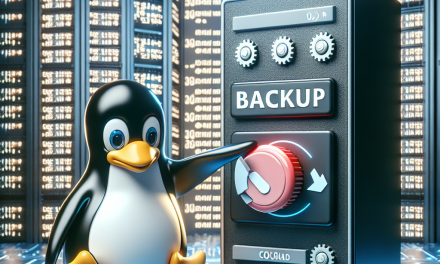As a Linux server administrator, keeping your system secure and up-to-date is crucial. One of the most powerful and innovative solutions available is kernel live patching. This enables administrators to apply patches to the running kernel without rebooting the system. In this article, we will explore kernel live patching in depth, discuss its benefits, tools available, and best practices for implementation.
What is Kernel Live Patching?
Kernel live patching allows you to update the Linux kernel’s code in memory while the operating system is still running. This means that critical security patches can be applied immediately without downtime. This capability is especially valuable in environments where uptime is critical, such as web servers, databases, and cloud infrastructures.
Benefits of Kernel Live Patching
-
Minimized Downtime: One of the most significant advantages of live patching is the ability to apply updates without restarting the system, which can lead to higher availability.
-
Improved Security: With live patching, you can quickly apply security fixes to potential vulnerabilities without waiting for scheduled maintenance windows.
-
Reduced Risk: Frequent reboots can increase the risk of system failures or configuration issues. Live patching mitigates this risk by reducing the frequency of restarts.
-
Simplified Management: For environments that require continuous uptime, such as financial institutions or healthcare systems, kernel live patching can streamline operations significantly.
How Kernel Live Patching Works
The kernel is a core component of the operating system, managing resources and communicating between hardware and software. Live patching works by modifying the kernel’s in-memory instructions rather than the binary files on disk. This modification does not require a reboot and is usually executed through a kernel module.
Tools for Kernel Live Patching
1. Ksplice
Ksplice, developed by Oracle, allows administrators to apply security patches to the Linux kernel without requiring system reboots. It is not just limited to patches but can also include feature enhancements.
2. kpatch
Developed by Red Hat, kpatch is an open-source project that allows kernel developers to create and apply live kernel patches. It uses a simple command-line interface for making changes to the running kernel.
3. KGraft
KGraft is an open-source live patching system introduced by SUSE. Similar to kpatch, it enables live patching using a user-friendly interface and is incorporated into SUSE Linux Enterprise Server.
4. Livepatch (Canonical)
Canonical offers a live patch service as part of the Ubuntu Advantage subscription. It integrates easily with Ubuntu server installations, allowing automated patch deployment without manual intervention.
Setting Up Kernel Live Patching
Prerequisites
- A Linux distribution that supports live patching (RHEL, Ubuntu, SUSE, etc.).
- Sufficient privileges (root or sudo access).
- An active internet connection for downloading the necessary tools.
Installation Steps
Here’s a general approach that you might follow based on the available tools:
Using Canonical’s Livepatch Service:
-
Register for Livepatch Service: You need to create an Ubuntu One account and register your machine for the live patch service.
-
Install the Livepatch Client:
bash
sudo snap install canonical-livepatch -
Enable the Livepatch Service:
bash
sudo canonical-livepatch enable -
Verify the Status:
bash
canonical-livepatch status
Using kpatch:
-
Install kpatch:
bash
sudo yum install kpatch -
Create a Patch:
bash
sudo kpatch-build <your_patch_file.c> -
Load the Patch:
bash
sudo kpatch load <your_patch.ko> -
Verify Active Patches:
bash
kpatch list
Best Practices for Kernel Live Patching
-
Test on a Staging Environment: Always test patches in a safe environment before deploying them in production. This avoids unexpected behavior.
-
Use Version Control: Keep track of the patches applied to the kernel using version control. This helps in troubleshooting and auditing.
-
Monitor Systems Regularly: After applying patches, continually monitor system performance and logs to identify any issues that arise.
-
Maintain Documentation: Keep comprehensive documentation of the live patching processes, tools used, and the status of each machine.
-
Regularly Update Tools: Ensure that the live patching tools and kernel versions stay up to date to leverage the latest performance improvements and security fixes.
Conclusion
Kernel live patching is an essential technique for Linux server administrators aiming for high availability and enhanced security. By implementing live patching, you can minimize system downtime, promptly address vulnerabilities, and simplify your server management tasks. Whether using tools like Ksplice, kpatch, KGraft, or Canonical’s Livepatch, kernel live patching represents a forward-thinking approach in maintaining optimal server health.
For Linux server administrators keen on enhancing their infrastructure’s uptime and security, mastering kernel live patching is a valuable investment in their skill set.
Feel free to share your experiences or ask questions regarding kernel live patching in the comments below! Happy patching!





